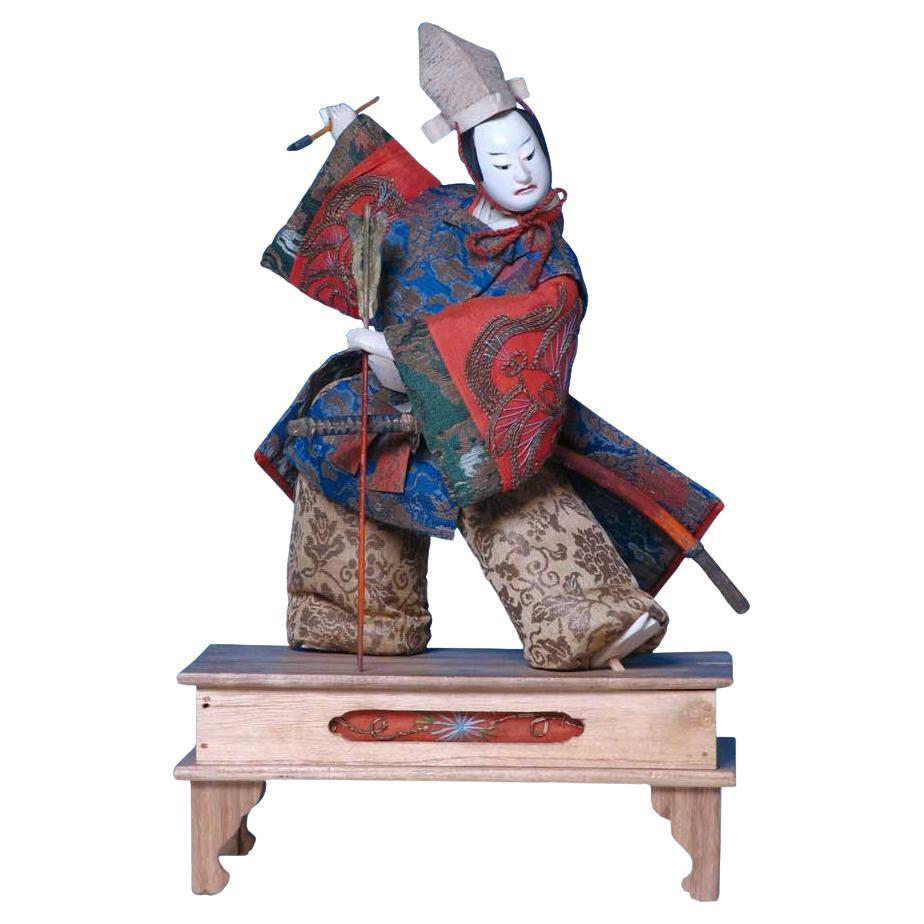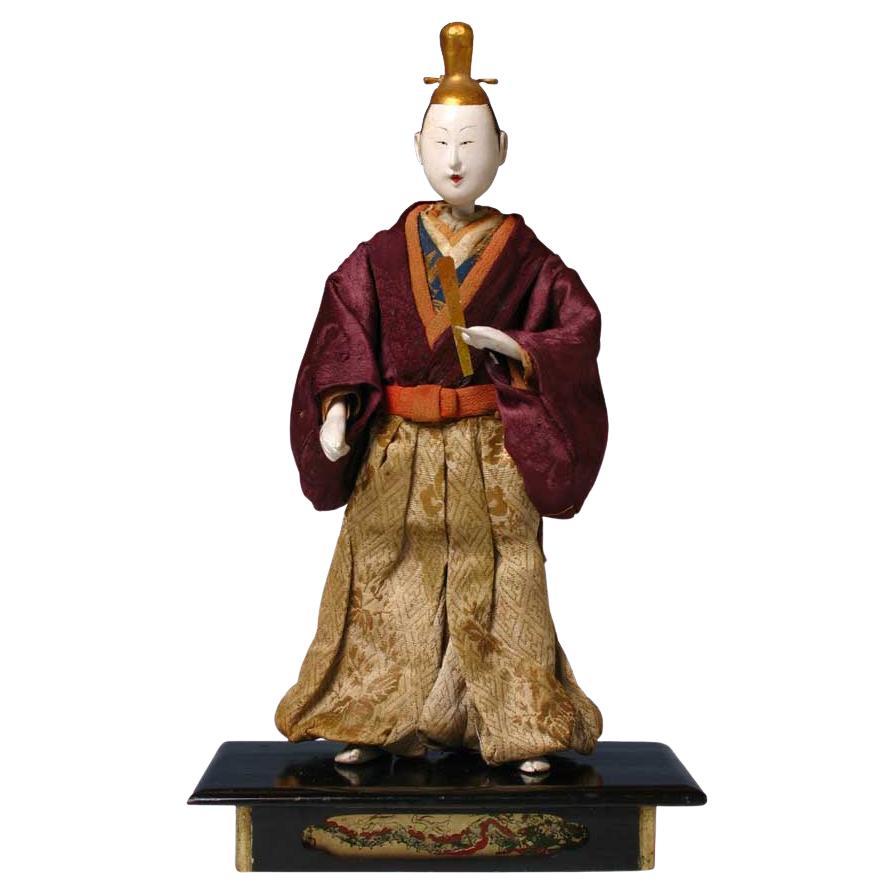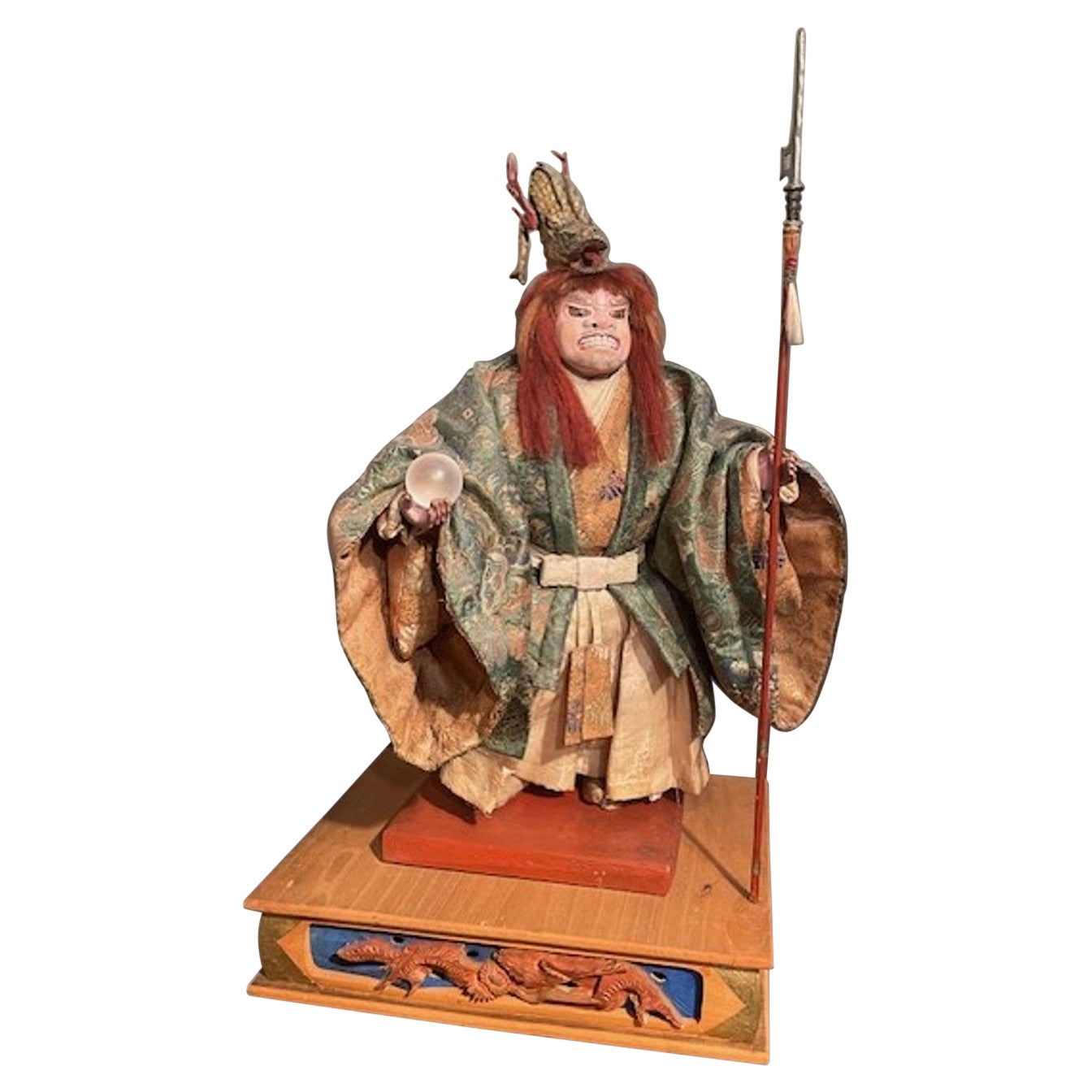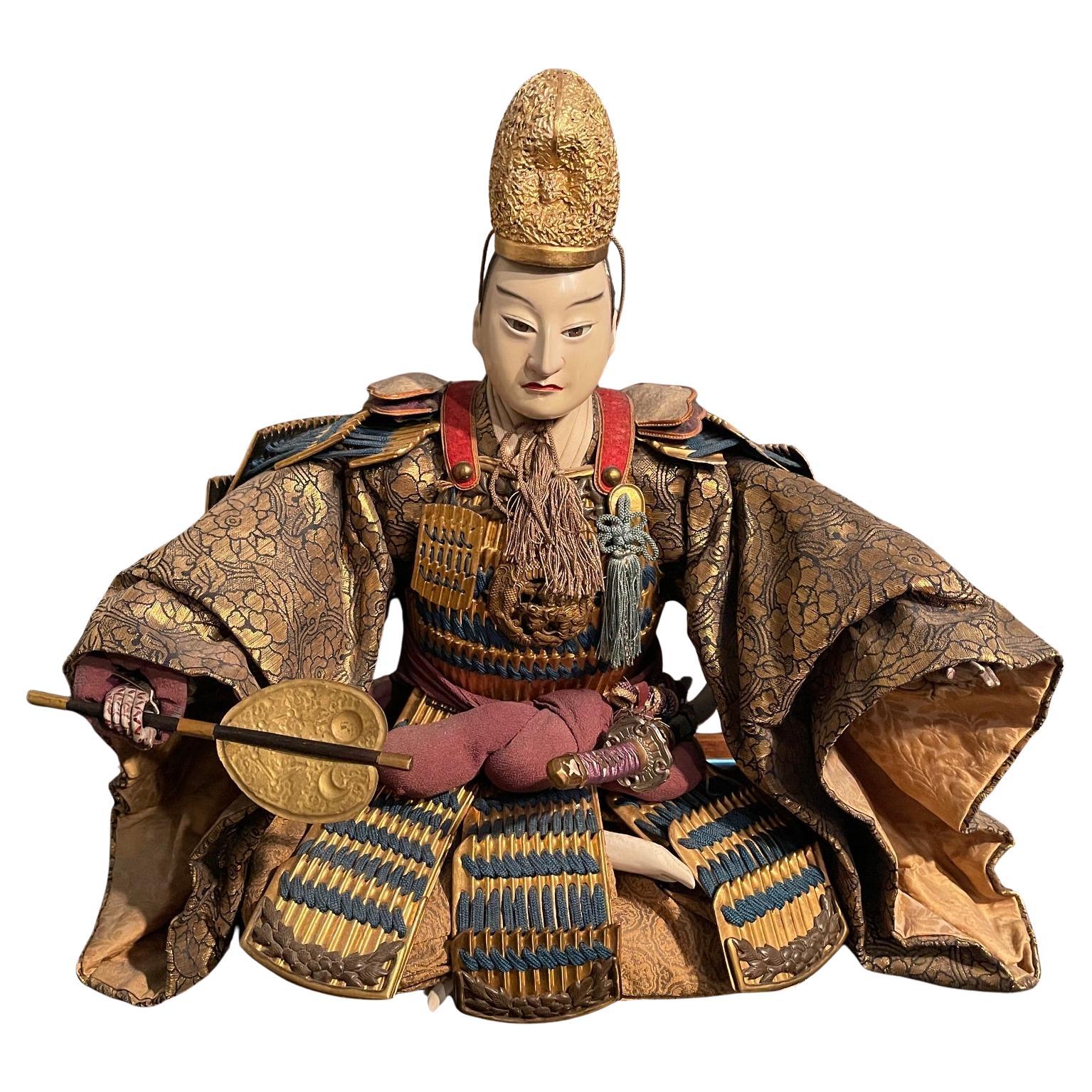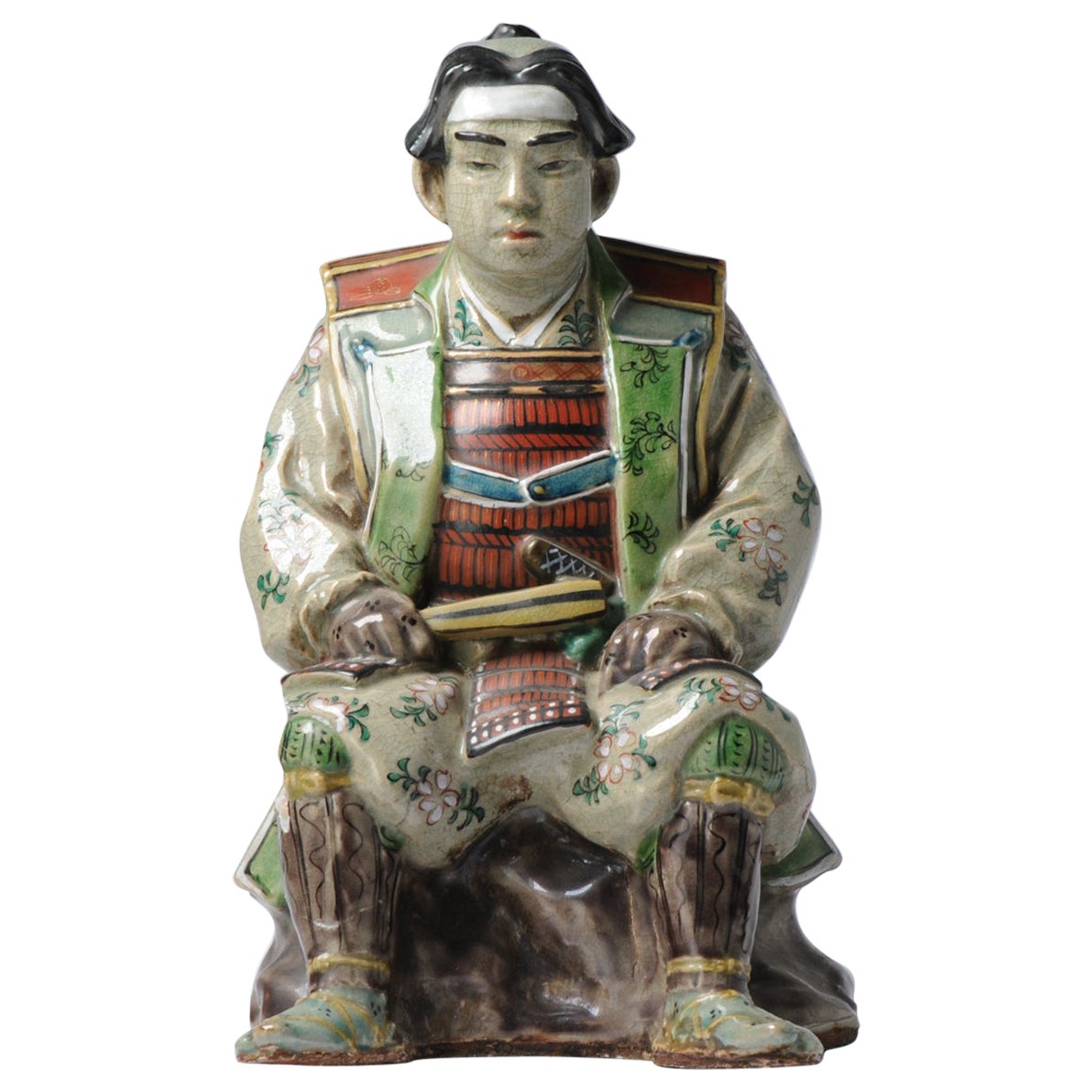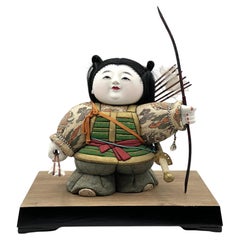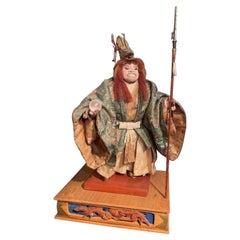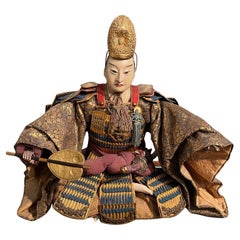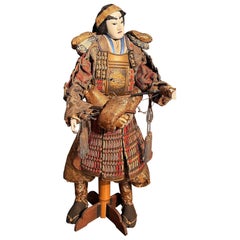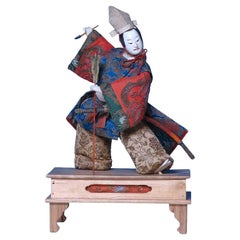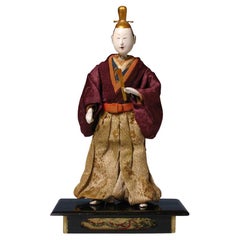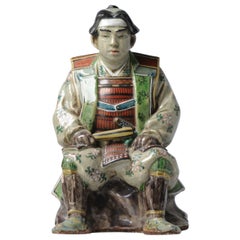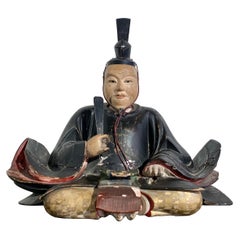Items Similar to Japanese Edo Period Saga Ningyo, Ca. 1850
Want more images or videos?
Request additional images or videos from the seller
1 of 7
Japanese Edo Period Saga Ningyo, Ca. 1850
$35,000
£26,428.78
€30,456.28
CA$49,399.88
A$54,462.24
CHF 28,492.88
MX$668,150.49
NOK 358,668.98
SEK 335,412.21
DKK 227,448.27
About the Item
Japanese Edo Period Saga Ningyo, Ca. 1850
DIMENSIONS
Height: 9.5 inches
Width: 6 inches
Depth: 5 inches
- Dimensions:Height: 9.5 in (24.13 cm)Width: 6 in (15.24 cm)Depth: 5 in (12.7 cm)
- Style:Japonisme (Of the Period)
- Materials and Techniques:
- Place of Origin:
- Period:
- Date of Manufacture:ca. 1850
- Condition:Wear consistent with age and use. We make our best effort to provide a fair and descriptive condition report. Please examine photos attentively, as they are part of the description. Send us a message to request more details or discuss price.
- Seller Location:New York, NY
- Reference Number:1stDibs: LU2819344675602
About the Seller
5.0
Gold Seller
Premium sellers maintaining a 4.3+ rating and 24-hour response times
Established in 1993
1stDibs seller since 2017
85 sales on 1stDibs
Typical response time: 11 hours
- ShippingRetrieving quote...Shipping from: New York, NY
- Return Policy
Authenticity Guarantee
In the unlikely event there’s an issue with an item’s authenticity, contact us within 1 year for a full refund. DetailsMoney-Back Guarantee
If your item is not as described, is damaged in transit, or does not arrive, contact us within 7 days for a full refund. Details24-Hour Cancellation
You have a 24-hour grace period in which to reconsider your purchase, with no questions asked.Vetted Professional Sellers
Our world-class sellers must adhere to strict standards for service and quality, maintaining the integrity of our listings.Price-Match Guarantee
If you find that a seller listed the same item for a lower price elsewhere, we’ll match it.Trusted Global Delivery
Our best-in-class carrier network provides specialized shipping options worldwide, including custom delivery.More From This Seller
View AllJapanese Meiji Period Gosho Ningyô of the First Emperor, Jimmu, Ca. 190
Located in New York, NY
Japanese Meiji Period Gosho Ningyô of Jimmu, the First Emperor of Japan, Ca. 1900
DIMENSIONS:
Height: 8.5 inches
Widt...
Category
Antique Early 1900s Japanese Japonisme Toys and Dolls
Materials
Ceramic
Japanese Edo Period Dragon God Ningyô, Ca. 1820
Located in New York, NY
Japanese Edo Period Dragon God Ningyô, Ca. 1820
DIMENSIONS
Height: 26 inches over all
Minor wear in textiles.
Fine antique condition
ABOUT
Musha-Ningyô (warr...
Category
Antique 1820s Japanese Japonisme Figurative Sculptures
Materials
Wood
Japanese Edo Period Musha Ningyo Seating Samurai, Ca. 1800
Located in New York, NY
Japanese Edo Period Musha Ningyo Seating Samurai, Ca. 1800
DIMENSIONS
Height: 16 inches
Width: 19 inches
Depth: 10 inches
ABOUT
Musha Ningyō (武者人形)- Literal meaning: "Warrior Dolls...
Category
Antique Early 1800s Japanese Japonisme Figurative Sculptures
Materials
Wood
Japanese Meiji Period Elaborate Bunraku Puppeta, 19th Century
Located in New York, NY
Japanese Meiji Period Elaborate Bunraku Puppeta. 19th Century
Meiji Period (1868-1912)
Minor wear to textiles, fine antique condition,
Original Bamboo display stand.
DIMENSION
Height: 33 inches
Width: 18 inches
Depth: 9 inches
ABOUT
Bunraku (puppet) depicting the warrior Minamoto Yoshistune his head carved of wood and covered in a fine white gofun with painted details, face of a handsome youth with trigger mechanism allowing for the eyebrows to raise and lower and the eyes to shift from side, is wearing military armor with signature dragon on his breastplate ,brocade patterning of his thick obi tie, sumptuous silk brocade kimono and brocade hakama trousers with the Minamoto Clan pattern, silk tabi socks...
Category
Antique Mid-19th Century Japanese Japonisme Figurative Sculptures
Materials
Wood
Japanese Edo Period Yoshitsune and Bannerman Warrior Musha Ningyô, Ca. 1800
Located in New York, NY
Japanese Edo Period Grand-Scale Yoshitsune and Bannerman Warrior Musha Ningyô, Ca. 1800
DIMENSIONS
Warrior - Height: 31 inches with platform.
Bannerman - Height: 28 inches with b...
Category
Antique Early 1800s Japanese Japonisme Sculptures and Carvings
Materials
Wood
Japanese Edo Period Okimono Carving of a Mythological Figure of Kirin, Ca. 1860
Located in New York, NY
Japanese Edo Period Okimono Carving of a Mythological Figure of Kirin, Ca. 1860
(Edo Period 1603-1868) 19th Century
DIMENSIONS:
Height: 13 i...
Category
Antique 1860s Japanese Figurative Sculptures
Materials
Wood
You May Also Like
Antique Japanese Takeda Ningyo
Located in Point Richmond, CA
Japanese Takeda Ningyo, depicting a kabuki actor on the stage, dressed in kinran dragon & cloud brocade coat with sleeves thrown back, chirimen silk crepe sleeves of inner coat embr...
Category
Antique 1820s Japanese Edo Toys and Dolls
Materials
Wood
Early Japanese Takeda Ningyo
Located in Point Richmond, CA
Early Japanese Takeda Ningyo, depicting an actor on stage in the role of an emperor, standing, costumed in silk and kinran brocades holding a paper scepter (shaku), the head carved o...
Category
Antique Late 18th Century Japanese Edo Toys and Dolls
Materials
Wood
Japanese Kutani Statues Story of Momotaro Tsugata Yuma, 19/20th C
Located in Amsterdam, Noord Holland
Large, lovely and very nicely made Kutani statues
They depict the characters from the story of Momotaro (Peach Boy). Specifically, Momotaro himself, Do...
Category
Antique 19th Century Japanese Figurative Sculptures
Materials
Porcelain
$2,398 Sale Price / set
20% Off
Japanese Carved and Lacquered Wood Shogun, Edo Period, 19th Century, Japan
Located in Austin, TX
An unusual Japanese carved wood, lacquer, and gilt decorated portrait sculpture of a shogun, Edo Period, early 19th century, Japan.
The unidentified shogun (possibly Tokugawa Iey...
Category
Antique Mid-19th Century Japanese Edo Sculptures and Carvings
Materials
Wood, Lacquer
Wooden Buddha statues from the Edo period in Japan/1800-1868/Late Edo period
Located in Sammu-shi, Chiba
This wooden Buddhist statue was made in the late to late Edo period.
It is thought to be a statue of Kannon Bodhisattva.
It was originally placed in a shrine and was painted, but the...
Category
Antique 19th Century Japanese Edo Sculptures and Carvings
Materials
Cypress
Antique Japanese Carved Village Buddha Enku Style
Located in Atlanta, GA
A carved wood buddha with lacquered surface in the style of Erku (1632–1695), a monk from Edo period who was famous for hand-carving Buddha statues in a primitive style. From a single wood block of what appears to be cedar, the standing buddha was carved in an unpolished manner with exposed knife strokes that effectively depicted a subtly smiling face and the folding of the cascading robes. The rustic style is full of Mingei charm being a great example of Japanese Buddhism...
Category
Antique 18th Century Japanese Edo Sculptures and Carvings
Materials
Wood
More Ways To Browse
1850 Antique Furniture
Classical Figures Sculpture
Cupid Statues
Dancer Ribbon
Dionysus Sculpture
Gladiator Statue
Grand Tour Sphinx
Hermes Caduceus Staff
Horse And Rider Statue
Inuit Soapstone
Isis Sculpture
Man And Camel Sculpture
Murano Glass Spiral Sculpture
Porcelain Goat
Reclining Marble Sculpture
Roman Marble Statue Of Venus
Sculpture Marble Children
Thai Goddess

